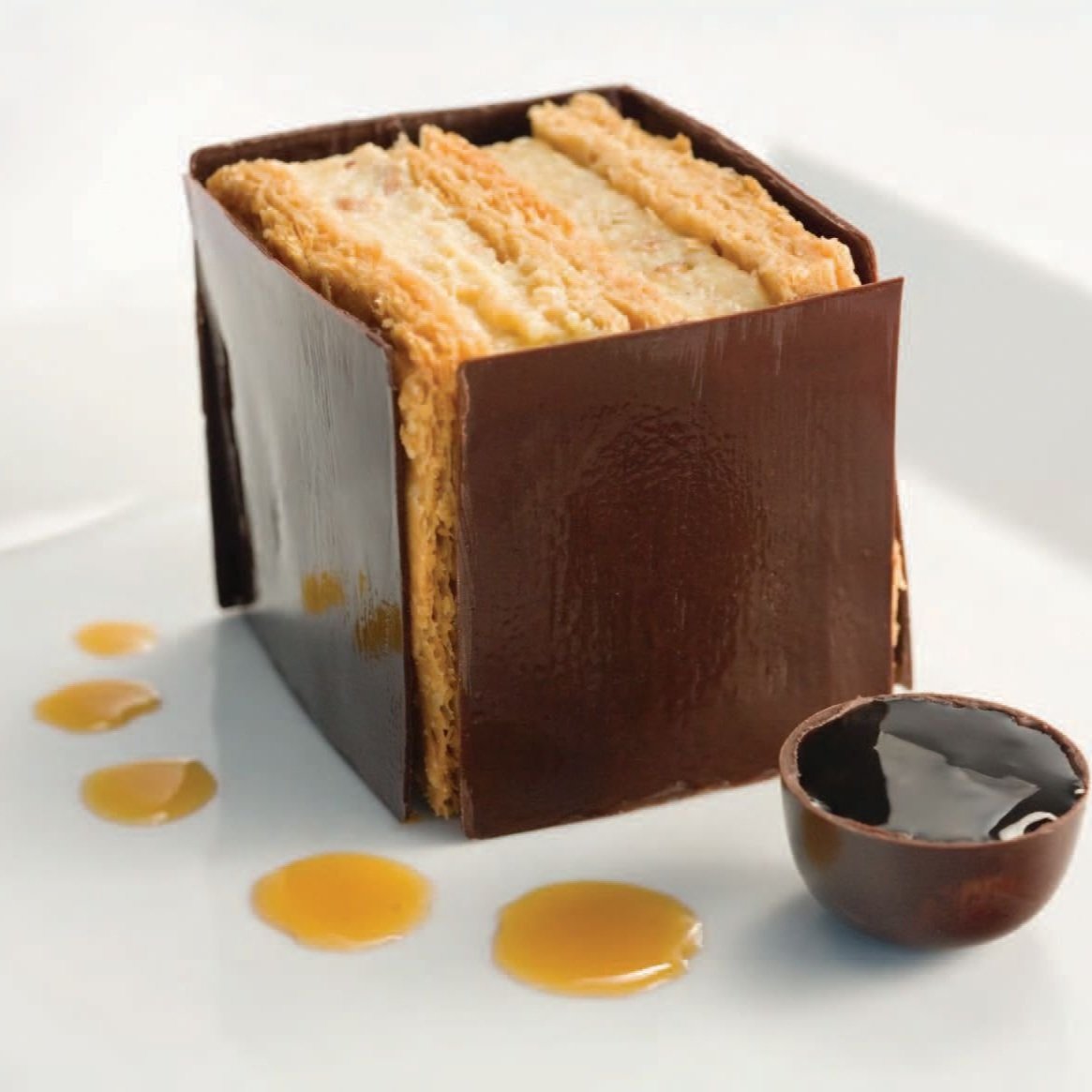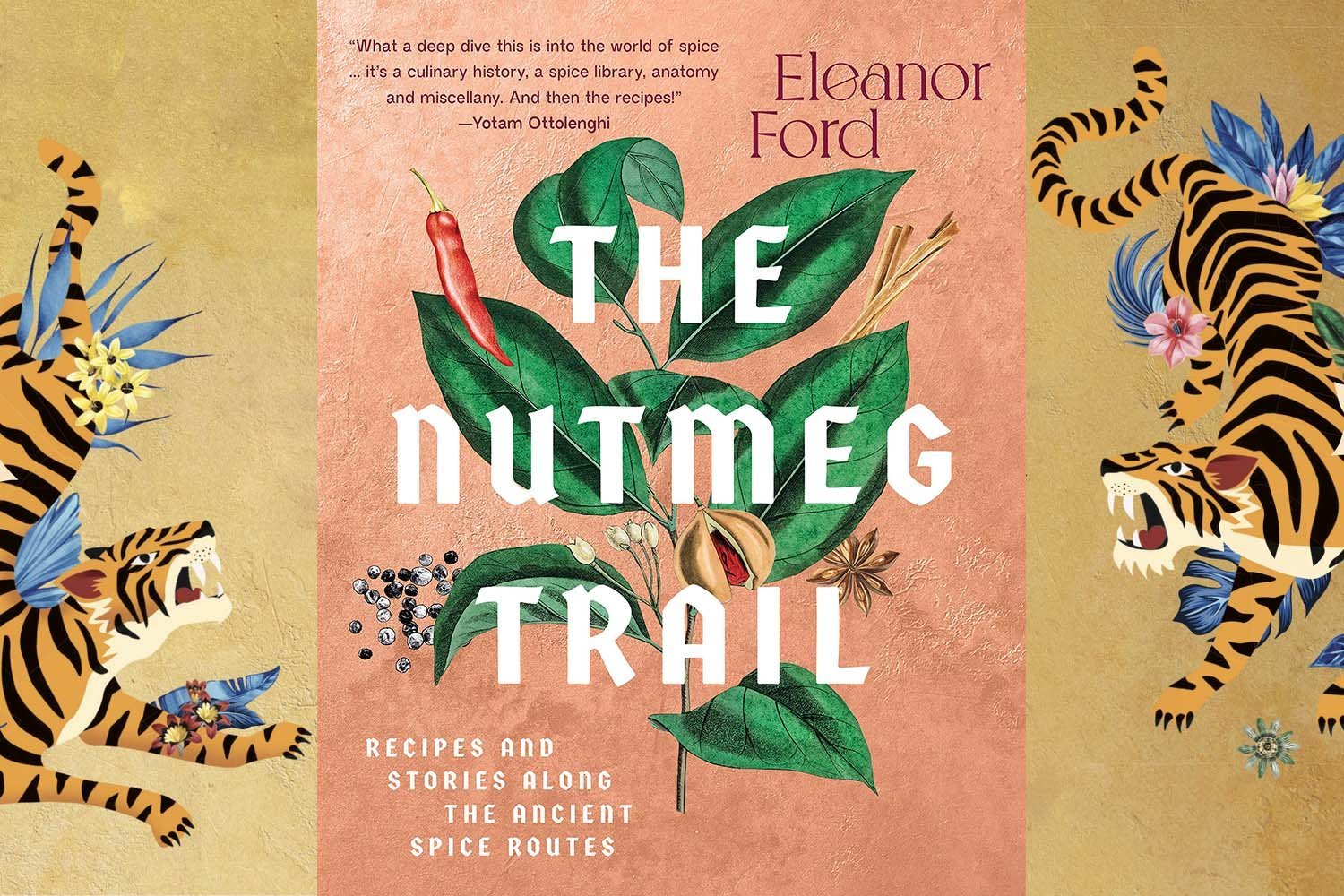Advertisement
Behind The Cookbook: The Dessert Architect
4 January 2023 · Behind the Cookbook
“In every creative field, whether architecture, painting, or the pastry arts, one needs to study the past to invent the future.”
Robert Wemischner is a pastry chef and culinary educator who has taught baking and pastry at Los Angeles Trade Technical College for more than 30 years. Robert’s long-standing interest in the flavor potential of ingredients culminated in The Dessert Architect, a text book designed to teach budding pastry chefs the fundamental building blocks and approaches which will allow them to freely express their creativity. We asked the author what led him to write the book…
From Chef Wemischner
In all of my years of teaching professionals how to make memorable desserts, I have always been reminded that you can teach technique but you can’t “teach” creativity. In my quest to offer a solution to that age-old conundrum, I knew that I had to write a book which ultimately became The Dessert Architect that would lead readers down a path that would liberate them from the tyranny of recipes. I hope that readers will get a sense of the book as a useful kaleidoscope where each turn reveals a new combination of compatible elements. I think that I have succeeded in that goal, offering a methodical look at what makes a successful dessert, how to plate it, what sauces and garnishes are necessary, all underpinned by a mastery of the basics — including pastry doughs, cakes, fillings, icings, glazes, plating sauces and garnishes — which are used over and over again, recombining them to create a universe of tasty, beautiful and appealing desserts.
My students have grasped this concept, by and large, and have become conversant in the language of plated, multidimensional desserts, understanding that their creativity lies in how they combine the elements put forth in the pages of the book. Using the fifty complete desserts as a launching off point, creators will create desserts defined by my philosophy where the Four Cornerstones, as I call them, of Flavor, Texture, Temperature and Contrast, play essential roles. This book will allow you, too, to become fluent in that sweets-inflected language.
From the original introduction to The Dessert Architect
“In every creative field, whether architecture, painting, or the pastry arts, one needs to study the past to invent the future. Becoming an artist takes time and a serious commitment whether you use paint and clay or butter, sugar, eggs, and flour. Learning the basics of cookery and baking, studying the styles of those chefs who have come before, and absorbing a broad knowledge of techniques and ingredients from food masters everywhere, all contribute to the formation of the successful pastry chef.”
…
“Developing one’s taste for unusual or yet undiscovered ingredients is key in creating innovative pastry art, but the other senses are crucial as well. One’s sense of smell, the eye for compelling visual presentation, the aesthetic sense that leads to the use of unusual plates, the ear for and appreciation of the crunch and crackle in a well-made, well-baked pastry, are all critical and can be stimulated by viewing art, listening to music, connecting oneself to the earth from which our food comes and translating this glory to the plate.”
…
“The German poet Goethe famously observed, ‘Architecture is frozen music.’ By extension, I believe that the Dessert Architect is composer and conductor, creator and presenter, who orchestrates a symphony of tastes and composes harmonies of ingredients that spell pure pleasure on the plate or in the bowl.”
…
“Over the years, I have tasted reflectively and widely. I have been curious and excited to learn the pastry traditions of my ancestors and those from other cultures. I have also learned that what seem like serendipitous discoveries are not happenstance at all. When one is committed to a field, one opens his eyes, ears, heart, and mind to new experiences. One is continuously receptive to what he reads, tastes, and hears—so that the “lovely accidents” that occur are actually no accidents but opportunities a wise eye can identify.”
…
“It is my hope that through this book, you will be inspired to be curious and taste widely, to be excited about the many food pleasures you discover, incorporating this lifelong excitement into your career in the pastry arts. I also hope that your pleasure working in the field translates into pure pleasure on the plate for countless diners who are the appreciative recipients of this long-practised art.”
About the author
Robert Wemischner is a pastry chef and culinary educator whose long-standing interest in the flavor potential of ingredients has culminated in The Dessert Architect, his fourth culinary book. Robert’s career has ranged from a pioneering gourmet-to-go shop to freelance food writing ― he is a regular contributor to Food Arts and Pastry Art and Design, among others ― and from France to California. For more than 30 years, he has taught baking and pastry at Los Angeles Trade Technical College. Robert frequently consults with those in the food service industry and is a regular presenter at professional organizations, including the International Association of Food Professionals, Retailers Bakery Association, and Women Chefs and Restaurateurs.
His earlier cookbook, Cooking with Tea, written with Diana Rosen, is also available in full on ckbk.
More features from ckbk
Karachi-born Shehar Bano Rizvi on keeping family traditions alive and helping the local community.
Tori True on the family experiences which fed into her book on Indian home cooking.
A spicy Q&A with Eleanor Ford, author of Fire Islands and The Nutmeg Trail.
Advertisement











